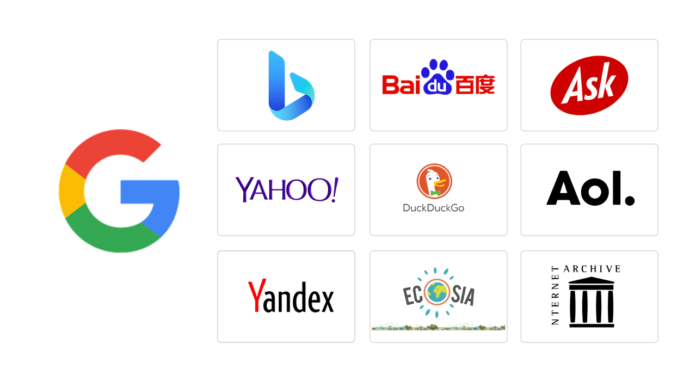If you are dedicated to ecommerce , you already know that creating your store is just the beginning. To get traffic and conversions, it is essential that you appear on Google when your potential customers search for you. And for that, you need your store to be SEO optimized.
The SEO strategy for an ecommerce should be present from the beginning, since the way in which we structure our website will help us a lot to position. We are going to see how to optimize the on page SEO of your online store step by step and some quick tips to improve it.
- Do you want to learn more about how to successfully optimize your ecommerce? Click here and download the most complete manual on how to grow your sales and web traffic to your digital commerce.
How to optimize SEO for ecommerce step by step
1) Set your priorities
In most industries, the most generic keywords (for example, “men’s clothing”) are taken over by large companies and are very difficult to rank. But that does not mean that you should give up doing SEO , far from it. The key is to rethink your strategy.
To have the maximum possibilities of positioning your online store, the recommendation is that you look for very specific keywords for each of your product pages (long tail) . The more “long tail” a keyword is, the easier it will be to reach the top of Google and other search engines. Also, if a user is looking for very specific keywords, it is probably a good sign that they are clear about what they need and therefore the chances of conversion will be higher.
The downside of this strategy is that if you work with hundreds or thousands of products, the task can be overwhelming. Therefore, the next thing to do is to prioritize the products and categories that you are going to work on first and most thoroughly. Look at your statistics on best-selling products and trends, for example, products that are selling more and more or that have a seasonal demand. (If you have not created your ecommerce yet, you can research on competitor pages or Amazon-like marketplaces ). From there, make a list of priority products to start considering the SEO of your ecommerce.
Once you have clear priorities, think about how you are going to organize the different product lines and categories to avoid repeating keywords on different pages (known as “cannibalization”). You can take inspiration from some of the competitor sites to see how they have structured their product offering.
And last but not least, if you are creating your store from scratch, choose an ecommerce platform that pays attention to SEO optimization.
2) Research your keywords
As we just discussed, SEO for ecommerce should be considered at the page level. Therefore, your next task should be to research the keywords that you are going to use on each of the pages of your online store.
We can distinguish between three main types of pages to optimize: the home page, the category pages and the product pages. For each of them you should have a main keyword and several “long-tail” variations.
If you already have an ecommerce running, go to the website map for a complete list of the pages on the site . If you have not launched it yet, use the structure you have decided for the web to make a list of all the pages that the site will contain.
Then follow this process to get the keywords for each page, starting with the ones you have identified as priorities:
- Go to a keyword tool . You can use Google’s own keyword planner or a third-party solution like SemRush, Ahrefs, or Sistrix.
- Enter a descriptive keyword for your product . You will get a list of related keyword ideas.
- Try to find a keyword that is representative of your product , has the highest possible search volume and a medium or low competition score . It is also important that it is a keyword with purchase intention, that is, the type of keyword that someone who is looking to buy a product would introduce and not simply search for information.
- Go to Google, enter that keyword and analyze the first page of results . Ideally, you should find other ecommerce sites (since this indicates that it is indeed a keyword with purchase intent), but that they are not from too large or very established brands.
- Once you have selected the main keyword for the page, enter it again in the tool and look for the “long tail” variations that interest you the most.
3) Work on the on-page SEO of your ecommerce
We call on-page SEO the optimization of the internal elements of the web page to improve its position in search engines. Now that you have defined the keywords that you are going to use in each of the pages of your site, it is time to start working on it by following these tips:
- Design SEO optimized URLs . The structure of the URLs is a very important factor in SEO, so you should create a well hierarchical system from the beginning (for example, www.mitienda.com/category/subcategory/product). Try to keep them as short and simple as possible and include the main keyword of each product.
- Optimize meta titles, descriptions, and H1s . Ideally, start with the priority pages of your ecommerce and write custom titles and descriptions for each of them. If you have many pages, you can use a standard template for the less relevant ones, grouping them by product lines and changing only the name of the product in question. As for the H1, it should be the category or product name, always making sure there is no more than one H1 per page.
- Write descriptions for each category and each product page. When designing your category pages, don’t limit yourself to a simple product gallery. Enter a short description that provides more information about that category and includes keywords naturally. In this way, you will not only be helping users, but Google’s algorithm will also be able to understand much better what the category is about. In the same way, each product page should also include a unique description (avoid duplicate content at all costs, as Google penalizes it).
- Enrich your website with structured data . Structured data, such as reviews or prices, make the result of your website in the Google SERP include more information. In this way, you stand out more among other results and encourage users to click. In addition, structured data helps Google’s algorithms to better interpret the content on your website.
- Make technical audits of your website periodically. This will help you detect problems such as duplicate content or orphaned or too deep pages and ensure that everything stays in order as you add and modify products.
4) Generate inbound links (SEO off page)
SEO off page consists of improving the reputation of your website in the face of search engines such as Google. This is achieved by having other quality pages link to your website. Here are some ideas to start working on your link building strategy :
- Establish collaborations with influencers in your niche to talk about your products and link to them. Keep in mind that sometimes it is more worth targeting influencers with modest audience numbers but who are experts in a particular niche and have high levels of interaction with their audience; It is what is known as “micro influencers”.
- Implement a content marketing strategy , for example, through a blog associated with your store. If you publish content that adds value to your typical client, you will get the links to be shared organically. Also, you can use your blog as the basis for guest posting strategies.
- Use a specialized tool (like Ahrefs) to find out which sites are linking to your competitors . There you can see if there are strategies that you can easily replicate, for example, get them to link you to a directory specialized in products in your sector.
- Contact the manufacturers and suppliers of your products and ask them to include you in the “Where to buy” section of their web pages.
- Create campaigns to attract the attention of users and make them link to you on blogs, media and social networks. For example, some ecommerce companies have achieved this by launching joke products such as unicorn blood or very special editions of a specific product.
5 SEO tips and tricks for ecommerce
1) Optimize loading speed
As you probably already know, Google is increasingly taking into account the user experience , and loading speed is a fundamental aspect.
According to CPC data, users expect a website to load in less than 2 seconds and 40% leave the page if it takes more than 3 seconds to load. It is estimated that reducing the loading speed by 50% increases the number of indexed pages by 100%, so it is one of the most effective measures to quickly optimize the SEO of your ecommerce.
2) Create links between different products on your site
In the world of SEO, there is a lot of talk about how to generate external links, but sometimes another equally important aspect is forgotten: the internal links from one page of the website to another.
Adding links between products increases the chances of cross-buying and increases the number of pages that Google can crawl and index. Sign up these recommendations to create more internal links within your site:
- Offer related or complementary products to the one the user is visiting.
- Show suggestions related to purchase history or other users’ preferences.
3) Improve the mobile experience
More and more users are encouraged to buy online from their mobile , but many pages still show tiny buttons, mismatches or texts that are difficult to read from small screens.
For years, the reference version for Google has been mobile, so optimizing this aspect should be among your SEO priorities for your ecommerce.
4) Watch out for duplicate URLs
Normally, ecommerce offers different ways to filter products. If we are not aware, this can result in many different URLs for a single product page , resulting in Google penalizing duplicate content. To solve this, regularly audit your page URLs and add “rel = canonical” tags when necessary.
5) Optimize images
All images on your site should include a title, alternative text, and description to help search engines better understand your content. In addition, if you have your own images of your products, you can use a tool to monitor whether other pages are using them and ask them to link you if that is the case, which will add points to your link building strategy.







